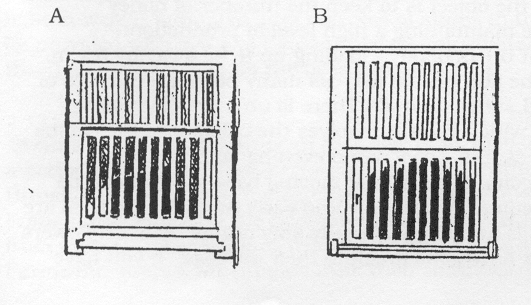HEATHER HONEY by COLIN WEIGHTMAN
Former member of MAFF's Bee Disease Advisory Committee & Bee Husbandry Committee and
Honorary Member British Beekeepers Association.
© BeeData www.beedata.com
Nutshells - Go back - Click here to print this page
"Wild blossoms of the moorland, ye are very dear to me;
Ye lure my dreaming memory as clover does the bee;
Ye bring back all my childhood loved, when freedom,joy,and health,
Had never thought of wearing chains to fetter fame and wealth."
Eliza Cook
HEATHER HONEY
We are dealing with areas (1) in the British Isles where the ling heather CALLUNA vulgaris is found and to a lesser extent the bell heathers ERICAS cinerea & tetralix and Scottish beekeepers produce a pleasing run honey from the bell heather - usually in July - which can be readily extracted. For, the beekeeper, the best heather moors (21) are the well managed grouse moors,where, the old ling is burnt on a regular basis to encourage new growth.And, here, the good will of Land Owners, Farmers and Gamekeepers must be sought and their requirements respected at all times. It is an unfortunate fact that many members of the public demand that they should have unrestricted access to open moorland and hill - often causing havoc among wild life and nesting birds.Beekeepers, too, often in their early days unwittingly fall into this trap. Moving their bee colonies on to the moors in late July' and August and setting the hives down 'willy nilly' withought prior consultation with anyone. Hives of bees from which supers of blossom honey have been recently removed house bees which can be unusually vindictive - at the sudden loss of their stores - are sometimes set down behind walls, close to footpaths, bridle paths and shooting butts: causing annoyance to walkers, pony treckers and shooting parties and their beaters, Before setting hives down anywhere - prior arrangement regarding permission, rent and siting, must be obtained from the parties concerned. Failure to do so can sometimes lead to the confiscation and loss of hives.
A heather stance (2) must be chosen with care - often a gully, or sheltered valley, can be found where the hives-can be set down on their own. Make sure the spot will not flood as (3) there have been many occasions when hives have been partly submerged and even washed away after torrential downpours on the moorland tops. Shelter is of the utmost importance and the bees should be able to fly out up the hill and come down hill loaded. Often, dark clouds of homecoming bees can be seen skimming the wall tops as they return to the hives after battling against strong winds on the open moor. Avoid communal stances, where, anything up to 100 stocks of bees are set down together, - often in straight rows - as there is a tendency for the bees to drift. A group of hives, with the entrances facing in different directions, is a better arrangement altogether. In small scale operations a simple hive stand - carrying - two hives - which can be carried on a pickup when moving bees is a useful additional piece of equipment to enable the hives to be kept off the ground, But, many stocks taken to the heather are set down on the ground - and leveled up with small pieces of stone. Unless a temporary alighting board is placed in front of the hive: growing heather or bracken may soon restrict hive entrances - compelling the returning foragers to run down the hive fronts to gain entry. Entrance blocks reducing hive entrances to around 12 inches in width and 3/4 inch high should always be in use to discourage slugs and rodents from gaining entry. In hot summers Adders are sometimes found under the hives when they are placed directly on the ground and rubber boots are best worn to avoid snake bites, or, the bees attacking the ankles.
Wear industrial,or strong leather gloves when lifting hives off the ground.
It is another unfortunate fact of human nature that whenever a beekeeper finds a stance, where over the years bees do well: other beekeepers will endeavor to take their stocks there too - and these moorland apiaries become eventually over stocked with bee colonies.


